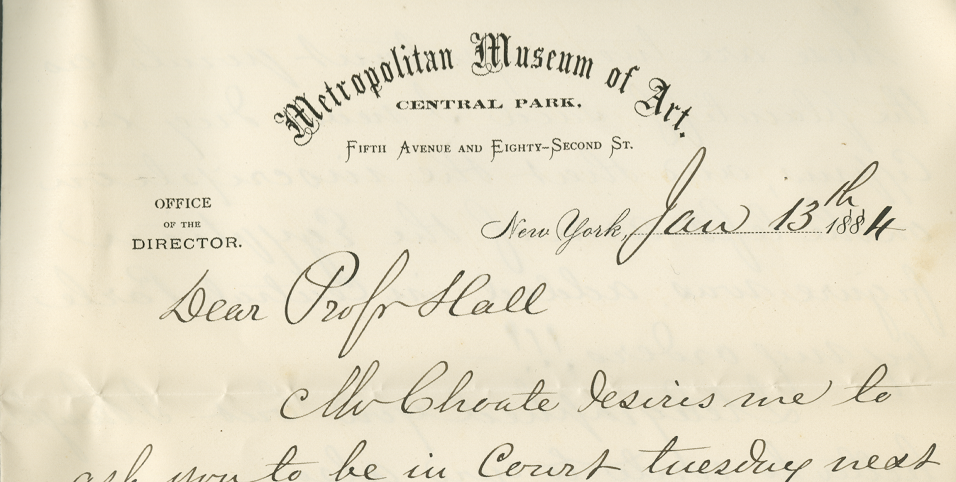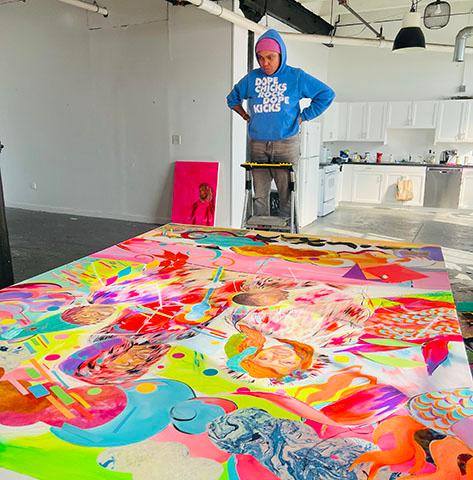Images courtesy of the Hamilton College Archives.

The family of Isaac Hall believes that he acquired the collection now housed at the Wellin in 1876 when he visited Cesnola in Cyprus, which was during Cesnola’s second stage of excavating in Cyprus. His first stage of excavating, done between 1866 and 1872, yielded a large collection, the majority of which was eventually sold to the Metropolitan Museum of Art (the Met). Once Cesnola decided to sell his collection, he packed up his objects, and sent them on ships headed for London in 1872. Several museums purchased objects from Cesnola at this time, including the British Museum. However, Cesnola preferred to sell the bulk of his collection to single museum. In 1872, just two years after it was founded, the Met made an offer and purchased the collection from Cesnola. Cesnola then brought his collection to New York and installed it. He eventually returned to Cyprus to conduct further digging, which is precisely when Isaac Hall visited him and likely acquired the objects now at the Wellin.
The two men stayed in close contact through the years. Cesnola became the Met’s first director and served from 1879 to 1904. He regularly corresponded with Hall and asked him for help in deciphering the inscriptions found on his Cypriot objects. For example, in a letter from July 1883 now in the Hamilton College Archives, Cesnola wrote to Hall asking him to visit the Met in order to help him with inscriptions. His confidence in Hall is exemplified in his statement “I know you will do the work ‘con amore’ having been connected already with the Cypriote antiquities.” Hall eventually joined Cesnola in working at the Met in 1885 and served as the Curator of the Department of Sculpture. Hall continued working with Cesnola in identifying objects in the collection and deciphering inscriptions until his death in 1896. Now, over one hundred years later, we can visit the objects on display at the Met or even closer to home at the Wellin and appreciate Isaac Hall’s dedication to preserving the physical history of Cyprus.
This post is the fifth part of a series about the origins and history of the Wellin’s recently acquired collection of Cypriot antiquities. For part one, visit: https://www.hamilton.edu/wellin/wellinformed/unpacking-the-past






